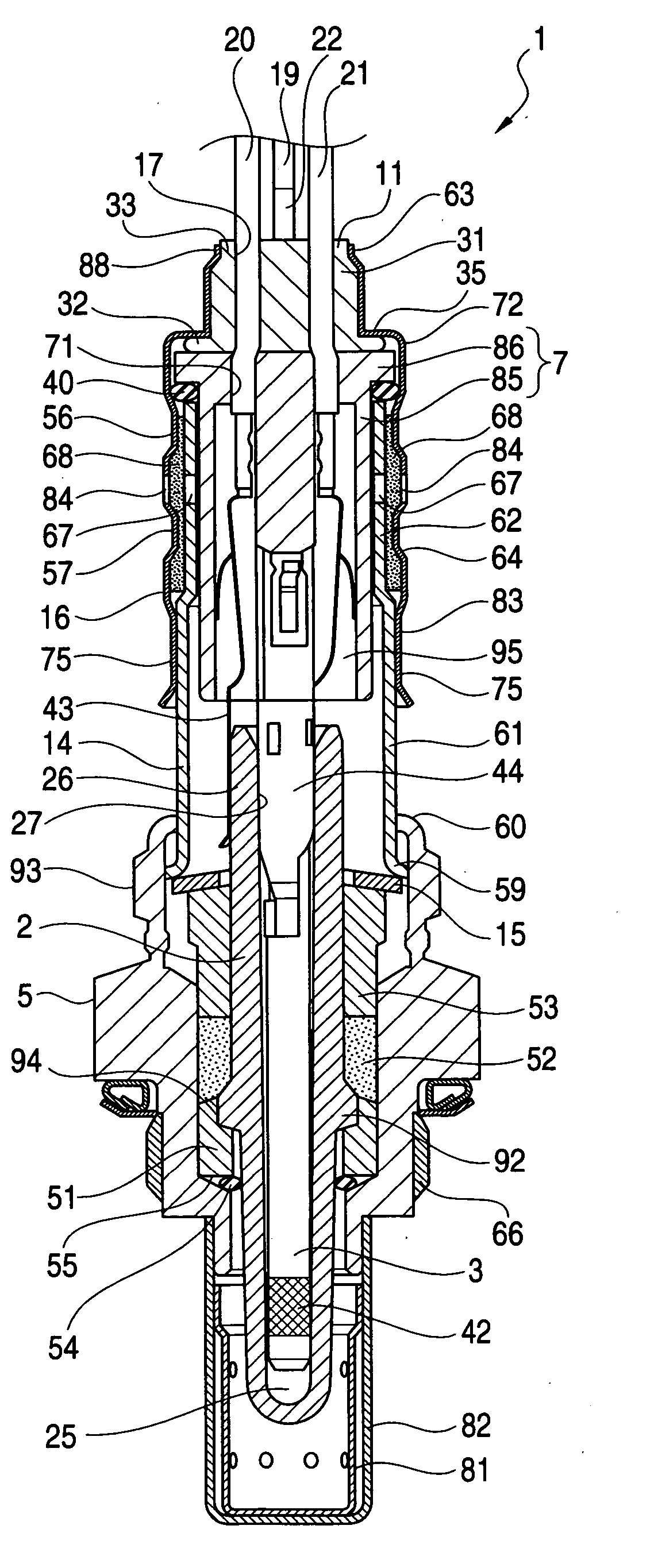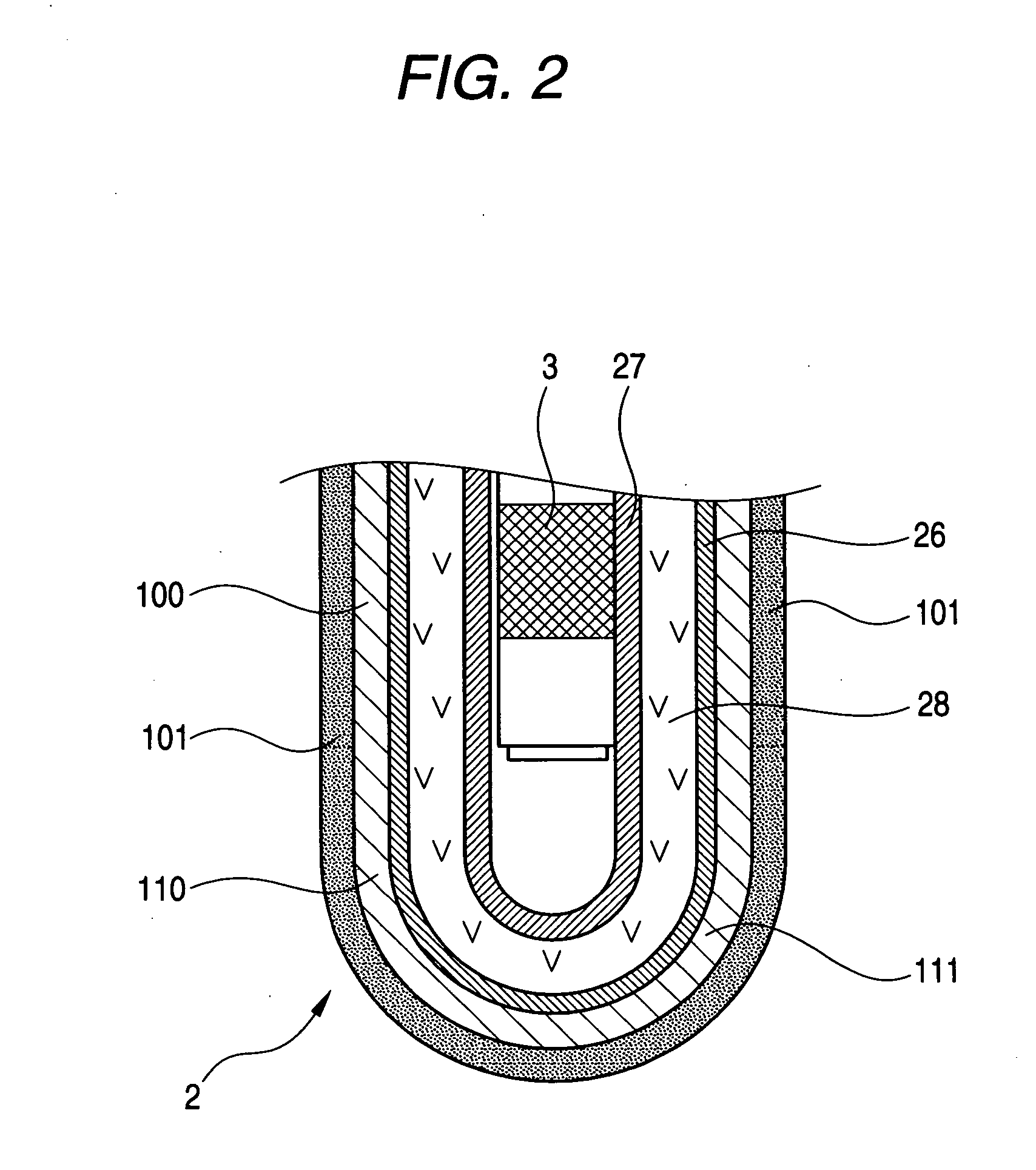Gas sensor and method for manufacturing the same
a technology of gas sensor and manufacturing method, which is applied in the direction of liquid/fluent solid measurement, material electrochemical variables, instruments, etc., can solve the problems of difficult precise combustion control and impaired measurement precision of oxygen concentration, and achieve the effects of reducing the diffusion of hydrogen, improving the durability of the poison preventing layer, and high endurance against peeling
- Summary
- Abstract
- Description
- Claims
- Application Information
AI Technical Summary
Benefits of technology
Problems solved by technology
Method used
Image
Examples
examples
[0079] The following various experiments were done to confirm the effects of the invention.
[0080] The various test pieces of the sensor element 2 having the shape shown in FIG. 2 were prepared in the following manner. First, zirconia having 5 mol % of yttria added thereto was granulated and formed into a bottomed cylinder shape. This bottomed cylinder was fired at 1,300° C. for 2 hours to prepare the solid electrolyte layer 28. Next, the solid electrolyte layer 28 was plated with Pt on its outer circumference and its inner circumference to form the outer electrode layer 26 and the inner electrode layer 27. Then, the outer electrode layer 26 was plasma-spray coated on its surface with alumina-magnesia-spinel to form the porous body of the electrode-protecting layer 100 having a thickness of 200 μm.
[0081] In Example 1, the porous body of the electrode-protecting layer 100 was then dipped in vacuum in a H2PtCl6 solution for 10 minutes. The H2PtCl6 solution contained 0.3 g / l of Pt. In...
PUM
 Login to View More
Login to View More Abstract
Description
Claims
Application Information
 Login to View More
Login to View More - R&D
- Intellectual Property
- Life Sciences
- Materials
- Tech Scout
- Unparalleled Data Quality
- Higher Quality Content
- 60% Fewer Hallucinations
Browse by: Latest US Patents, China's latest patents, Technical Efficacy Thesaurus, Application Domain, Technology Topic, Popular Technical Reports.
© 2025 PatSnap. All rights reserved.Legal|Privacy policy|Modern Slavery Act Transparency Statement|Sitemap|About US| Contact US: help@patsnap.com



